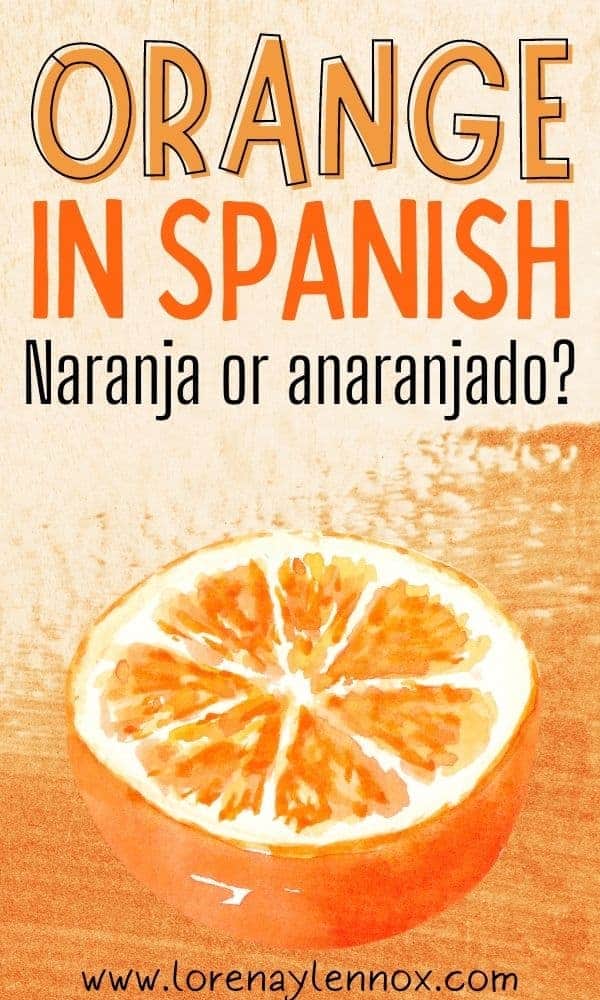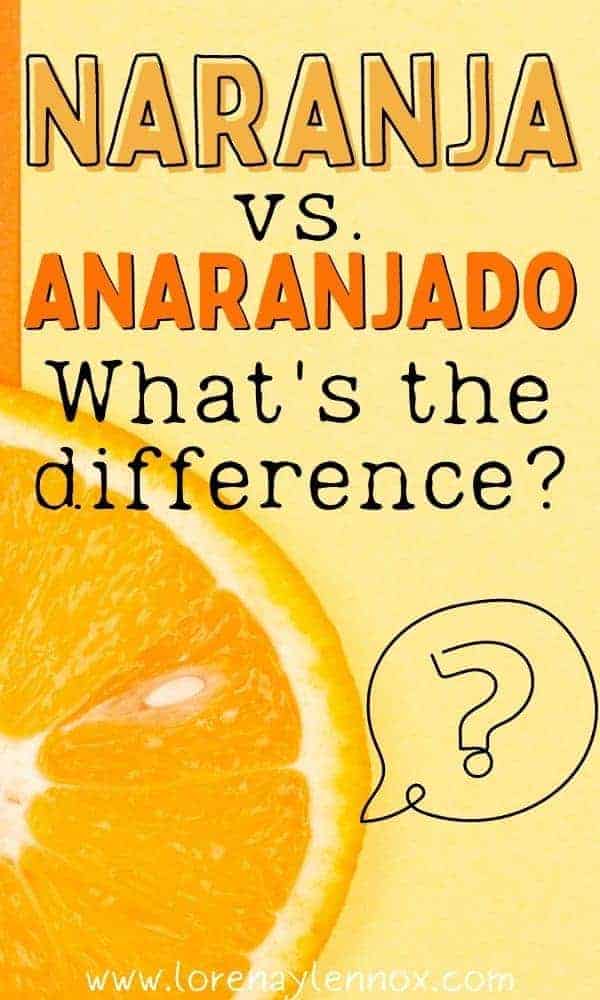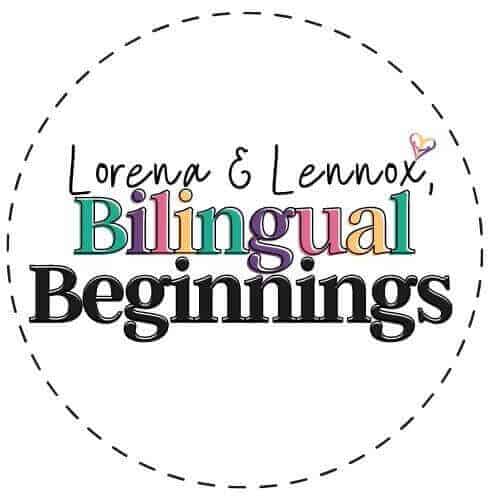Let’s delve into the nuances of language and explore the distinction between “naranja” and “anaranjado” in Spanish, particularly when referring to the color orange. While both terms convey the essence of this vibrant hue, they each offer a slightly different perspective.
Join us on this linguistic journey as we uncover the subtle variations in meaning and usage between these two expressions. So, without further ado, let’s unravel the mystery and shed light on how we articulate the color orange in Spanish. Let’s find out!

How do you say orange in Spanish
There are two ways to say orange in the Spanish language:
- Naranja [nah-RAHN-hah]
- Anaranjado [ah-NAH-rah-HAH-doh]
Naranja vs. Anaranjado: which one do I use and when?
Now that you know the two different words to say orange in Spanish, let’s figure out when to use each one?
For starters, naranja is a feminine noun for the orange fruit.

Anaranjado is an adjective that describes something of the color orange.
Now, while naranja represents the orange fruit, it can also be used as an adjective too to describe the color orange.
So which word should we use to describe the color orange in Spanish?
According to Real Academia Española, you can use both words interchangeably to describe the color orange in Spanish.
While some Spanish-speakers might use the words interchangeably, some countries use the word naranja, while other countries use the word anaranjado. I am still in the process of figuring out which countries use which. (Let me know which word you use at the end of the post, and include which country you are from!)
Naranja vs. anaranjado: Example sentences
Alright so naranja is a noun that describes the orange fruit, but it can also be an adjective, like anaranjado to describe hues of the color orange, too.
Slightly confusing, right? At least you know you can’t go wrong if you use one of these words to describe the color orange.

Nonetheless, both words, as adjectives, work a little differently.
Naranja is an invariable adjective which means that no matter what the gender of the word it is describing is, its form does not change.
Anaranjado, on the other hand, does change to agree with gender.
Let’s take a look at a couple example sentences of naranja and anaranjado.
Mi carro es naranja.
My car is orange.
Mi carro es anaranjado.
My car is orange.
Tu camisa es naranja.
Your shirt is orange.
Tu camisa es anaranjada.
Your shirt is orange.
Los coches naranja van muy rápido.
The orange cars go very fast.
Los coches anaranjados van muy rápido.
The orange cars go very fast.
Las faldas naranja son bonitas.
The orange skirts are pretty.
Las faldas anaranjadas son bonitas.
The orange skirts are pretty.
If you take a look at each sentence, notice how anaranjado changes to agree with gender as well as singular and plural nouns. This makes using anaranjado a bit more tricky.
So, when all else fails, and you are not sure which word to use, stick with naranja!
Which term do you use to say orange in Spanish?
I have always used the term anaranjado when referring to the color orange in Spanish.
I hadn’t thought about my word of preference for orange until I started raising my bilingual son and came to a crossroads.
Related: Raising Bilingual Children? Here are 13 Facts You Need to Know!
In some Spanish books, as well as YouTube channels in Spanish, I would read or hear the word anaranjado. But then sometimes, I would see naranja.
My curiosity peaked when one day I was making a color by number printable for a St. Patrick’s Day kit in Spanish. I was browsing through different ideas for inspiration, and I saw another designer of Spanish printables use the word naranja and I immediately thought they were wrong. “Naranja is for the fruit,” I thought to myself.
But, before I allowed my judgment carry on, I decided to research more and that’s where I have gathered the information for today’s post!
Conclusion:
It today’s post, we have taken a look at two words naranja and anaranjado.
The word naranja is a noun that describes the orange fruit, but it can also be used as an adjective to describe hues of the color orange.
Likewise, anaranjado is used to describe the color orange.
Whichever word you decide to use is totally up to you. Let me know which word you prefer in the comments below!
Additional resources:
- Free Color Flashcards in Spanish for Kids
- Color Learning Activities for Kids
- A Cars Color Learning Activity for Bilingual Kids
- Books about colors in Spanish for kids


ella
Saturday 5th of August 2023
I am living in Bolivia 🇧🇴 right know, and here people usually would use the word “naranja”.
Lorena
Sunday 6th of August 2023
Thank you for sharing!!!
Alejandra
Tuesday 4th of April 2023
I'm from Costa Rica and I say anaranjado.
Lorena
Wednesday 5th of April 2023
Gracias por compartir con nosotros, Alejandra. ¡Yo también digo anaranjado!
Claudia
Monday 30th of January 2023
Hi, I’m from Cuba, and I remember mostly using the word “anaranjado.”However, once I moved to the US, I started using “naranja.” This probably happened because of the amount of people from other countries who call it that way. It could just be my personal experience, but that’s how it worked for me.
Lorena
Tuesday 31st of January 2023
Hi Claudia! Thank you so much for sharing what word for the color orange in Spanish you used in Cuba!! I always use anaranjado, too, and I learned Spanish here in the U.S.!